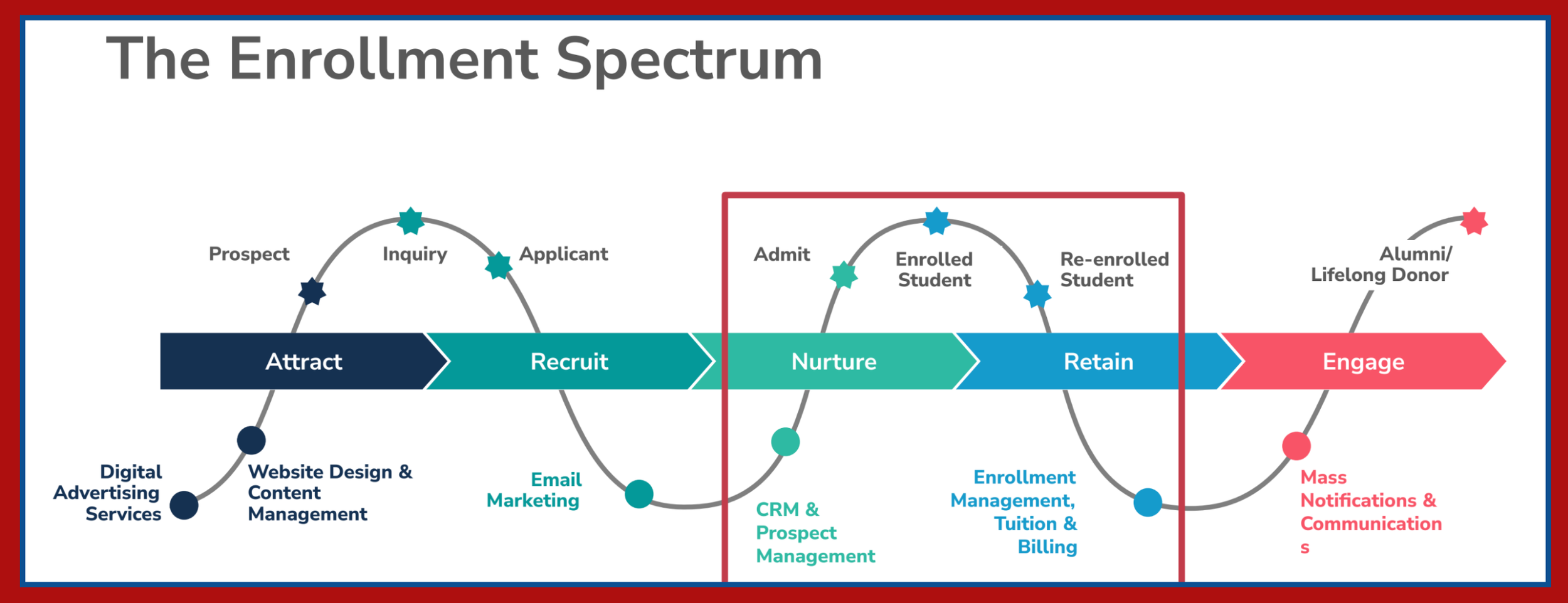New Family Onboarding: Turning Survival into Belonging
Joining a new school community shouldn’t feel like trying to jump onto a train moving 150 miles per hour. And yet, for many new families, that’s exactly what the start of school can feel like. Now that the dust has settled, this is the perfect time to pause, reflect, and invite your school’s administrative and academic leaders to assess your new family onboarding and start-of-year experiences.
As Keenan Kurihara of Flintridge Prep and Cristy McNay of Finalsite reminded us at EMA AC25 in their session “After Admission: Reimagining the Post-Enrollment Experience,” onboarding is about far more than logistics—it’s about nurturing your newest community members.
Here are four essentials for getting it right:
1. Survey with purpose
Ideally, schools should survey new families twice each year:
Early August: Ask about the experience from the moment they signed their enrollment agreement through the last onboarding form they completed.
Six weeks after school starts: Ask about the early-year experience—what went well, what was confusing, and what made them feel welcome (or not).
A simple, well-designed survey can yield invaluable insights. Done right, it helps you turn new families into enthusiastic brand advocates instead of attrition risks waiting to detonate next spring.
Most importantly — Do what schools often fail to do - Share the survey results with your family, perhaps not the raw data, but certainly in a way that leaves families with an unmistakable impression that yours is a school where there voice matters. In cases where the survey data points to areas of potential growth, tell your families thank you as they’ve given you a gift. Next, show them with specific examples how the school will grow, so future classes of new families have an even better experience.
2. Document your process - I mean REALLY document it.
Clear, consistent, and well-documented onboarding procedures aren’t just operational niceties—they’re essential for sustainability and coordination. When multiple offices communicate with families, a detailed playbook ensures sequencing, alignment, and tone consistency.
Few things erode confidence faster than a new family being told to “check the portal” before they even have access to it.
3. Centralize all forms and instructions
If your offices are still emailing forms individually, it’s time to cease and desist. New family forms, checklists, and instructions should live in one clearly labeled, easy-to-access location that families can revisit anytime.
A parent should never have to dig through their inbox to find a form sent six weeks ago. Centralization saves time for families and staff alike—and signals organizational competence.
4. Build relationships intentionally
The best onboarding programs go beyond logistics. They help families form authentic connections within your community.
As Keri Hehn, Director of Admission and Enrollment at Harbor Day School, shared recently in her piece “Welcoming New Families to HDS,” the people side of onboarding—helping new families find their place—often determines whether they truly feel they belong.
The takeaway
The effort you invest in new family onboarding pays dividends for years. Strong onboarding boosts retention, fosters advocacy, and models excellence in one of the most important experiences a school can deliver.
Your newest families are your next ambassadors. Let’s make sure they start their journey feeling seen, supported, and connected.

